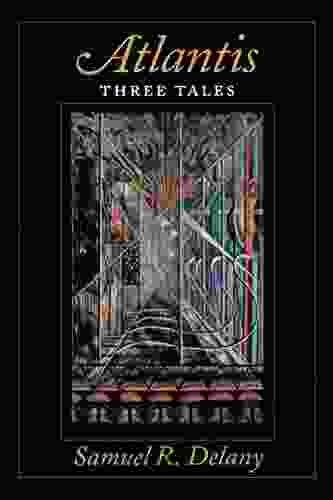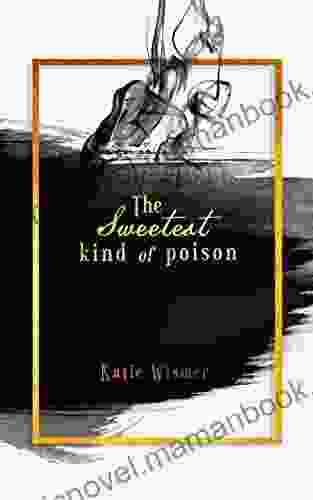The Sweetest Kind of Poison: Exploring the Enchanting Allure of Deadly Plants

In the tranquil realm of nature, where beauty and danger intertwine, there exists a captivating paradox: the allure of deadly plants. These botanical temptresses possess an ethereal elegance that belies their sinister nature, enticing us with their vibrant hues and fragrant blossoms, yet concealing a hidden arsenal of toxins.
The Veiled Threat: Understanding Plant Toxicity
The toxicity of plants stems from a complex interplay of chemical compounds, each serving a specific defensive purpose. These toxins may target vital organs, disrupting their delicate balance and leading to potentially fatal consequences. Alkaloids, glycosides, and terpenes are just a few of the formidable toxins employed by plants to ward off predators and protect their precious resources.
4.4 out of 5
| Language | : | English |
| File size | : | 1168 KB |
| Text-to-Speech | : | Enabled |
| Screen Reader | : | Supported |
| Enhanced typesetting | : | Enabled |
| Print length | : | 146 pages |
| Lending | : | Enabled |
While some plants rely on their toxicity as a self-defense mechanism, others have evolved to harness it for more sinister purposes. For instance, the Venus flytrap lures unsuspecting insects with its sweet nectar, only to snap shut its deadly jaws and digest its victims. The pitcher plant, with its alluring pitcher-shaped leaves filled with a digestive fluid, traps and dissolves insects.
The Enchanting Beauty: A Visual Symphony of Danger
Despite their deadly potential, poisonous plants exude an undeniable beauty that captivates our senses. The foxglove, with its towering spikes crowned by bell-shaped flowers in shades of purple, white, and pink, is a testament to the deceptive charm of toxic flora. The delicate petals of the monkshood, resembling the hood of a monk, conceal a potent neurotoxin that can cause severe poisoning.
The hemlock, a notorious plant in both history and literature, features graceful fern-like leaves and delicate white flowers. Its deadly poison, coniine, has been used for centuries as a form of execution. Yet, its sinister reputation belies the plant's alluring appearance, a testament to the deceptive nature of poisonous plants.
A Dance with Death: The Intriguing History of Plant Poisons
Throughout history, poisonous plants have played both benevolent and malevolent roles. In ancient Greece, the hemlock was employed in the execution of philosopher Socrates, a poignant reminder of the plant's deadly power. In the world of medicine, plants such as the foxglove have been harnessed for therapeutic purposes, their toxins carefully extracted and diluted to create life-saving drugs.
Poisonous plants have also featured prominently in folklore and mythology. The aconite, with its deep purple flowers resembling a wolf's mouth, was said to have originated from the foam of Cerberus, the three-headed dog guarding the gates of the underworld. The mandrake, with its humanoid-shaped root, was believed to possess magical properties and was often used in potions and spells.
The Path to Safety: Respecting the Boundaries of Nature
While the beauty and intrigue of poisonous plants may be undeniable, it is crucial to approach them with caution and respect. Admiring them from a distance is a prudent action, and touching or ingesting any part of a plant without proper identification can be potentially hazardous.
Children, in particular, should be supervised when exploring nature, as they may be unaware of the dangers posed by poisonous plants. Keeping a watchful eye and educating them about the importance of avoiding unknown vegetation can help prevent accidents.
The allure of poisonous plants is a testament to the tantalizing dance between beauty and danger that permeates the natural world. Their enchanting appearance and intriguing history serve as a reminder of the profound power hidden within nature's embrace. By understanding plant toxicity, appreciating their beauty from a safe distance, and respecting the boundaries of the natural world, we can safely admire the captivating charm of these deadly botanical wonders.
And so, as we traverse the verdant paths of nature, let us approach poisonous plants with a mix of awe and reverence, acknowledging their seductive beauty while maintaining a healthy respect for their hidden power.
### Alt Tags for Images:
- **Foxglove:** A tall, majestic plant with bell-shaped flowers in various shades. - **Monkshood:** A delicate plant with hooded flowers, resembling a monk's attire. - **Hemlock:** A graceful plant with fern-like leaves and white flowers. - **Aconite:** A striking plant with deep purple flowers reminiscent of a wolf's mouth. - **Mandrake:** A unique plant with a humanoid-shaped root, often depicted in folklore and mythology.
4.4 out of 5
| Language | : | English |
| File size | : | 1168 KB |
| Text-to-Speech | : | Enabled |
| Screen Reader | : | Supported |
| Enhanced typesetting | : | Enabled |
| Print length | : | 146 pages |
| Lending | : | Enabled |
Do you want to contribute by writing guest posts on this blog?
Please contact us and send us a resume of previous articles that you have written.
 Top Book
Top Book Novel
Novel Fiction
Fiction Nonfiction
Nonfiction Literature
Literature Paperback
Paperback Hardcover
Hardcover E-book
E-book Audiobook
Audiobook Bestseller
Bestseller Classic
Classic Mystery
Mystery Thriller
Thriller Romance
Romance Fantasy
Fantasy Science Fiction
Science Fiction Biography
Biography Memoir
Memoir Autobiography
Autobiography Poetry
Poetry Drama
Drama Historical Fiction
Historical Fiction Self-help
Self-help Young Adult
Young Adult Childrens Books
Childrens Books Graphic Novel
Graphic Novel Anthology
Anthology Series
Series Encyclopedia
Encyclopedia Reference
Reference Guidebook
Guidebook Textbook
Textbook Workbook
Workbook Journal
Journal Diary
Diary Manuscript
Manuscript Folio
Folio Pulp Fiction
Pulp Fiction Short Stories
Short Stories Fairy Tales
Fairy Tales Fables
Fables Mythology
Mythology Philosophy
Philosophy Religion
Religion Spirituality
Spirituality Essays
Essays Critique
Critique Commentary
Commentary Glossary
Glossary Bibliography
Bibliography Index
Index Table of Contents
Table of Contents Preface
Preface Introduction
Introduction Foreword
Foreword Afterword
Afterword Appendices
Appendices Annotations
Annotations Footnotes
Footnotes Epilogue
Epilogue Prologue
Prologue Matthias T Meifert
Matthias T Meifert E E Rawls
E E Rawls Marilyn Jansen
Marilyn Jansen Mark Manson
Mark Manson Michael Chabon
Michael Chabon G K Parks
G K Parks Lois Tarter
Lois Tarter Joseph Conrad
Joseph Conrad Stefan Zweig
Stefan Zweig John Gomez
John Gomez Barry Wittenstein
Barry Wittenstein Edgar Cantero
Edgar Cantero Andrew Lang
Andrew Lang Megan Haskell
Megan Haskell T A White
T A White Henry Thomas Hamblin
Henry Thomas Hamblin Julie Zhuo
Julie Zhuo Alyssa Gallagher
Alyssa Gallagher Grace Paley
Grace Paley Erica Bauermeister
Erica Bauermeister
Light bulbAdvertise smarter! Our strategic ad space ensures maximum exposure. Reserve your spot today!

 Andy HayesAtlantis: Three Tales by Samuel R. Delany - A Literary Odyssey through a Lost...
Andy HayesAtlantis: Three Tales by Samuel R. Delany - A Literary Odyssey through a Lost... Jarrett BlairFollow ·18.2k
Jarrett BlairFollow ·18.2k Lucas ReedFollow ·4k
Lucas ReedFollow ·4k Louis HayesFollow ·8.2k
Louis HayesFollow ·8.2k William GoldingFollow ·15.8k
William GoldingFollow ·15.8k Peter CarterFollow ·4.4k
Peter CarterFollow ·4.4k Johnny TurnerFollow ·12.2k
Johnny TurnerFollow ·12.2k Nick TurnerFollow ·6.4k
Nick TurnerFollow ·6.4k Christian CarterFollow ·5k
Christian CarterFollow ·5k

 Rex Hayes
Rex HayesWorld of Dead Volume Issue: An In-Depth Analysis
The World of Dead volume issue...

 Nathan Reed
Nathan ReedHard Lessons Learned from ERP Rollouts: A Hivemind...
Enterprise...

 Fernando Bell
Fernando BellWith the Light, Vol. 1: Illuminating the Extraordinary...
The advent of parenthood is a...

 Wesley Reed
Wesley ReedNo Helping Hand: True Story of Deadly Waves
In December 2004,...

 Ruben Cox
Ruben CoxIntroduction to Electrodynamics by David Griffiths: A...
to Electrodynamics by...
4.4 out of 5
| Language | : | English |
| File size | : | 1168 KB |
| Text-to-Speech | : | Enabled |
| Screen Reader | : | Supported |
| Enhanced typesetting | : | Enabled |
| Print length | : | 146 pages |
| Lending | : | Enabled |












